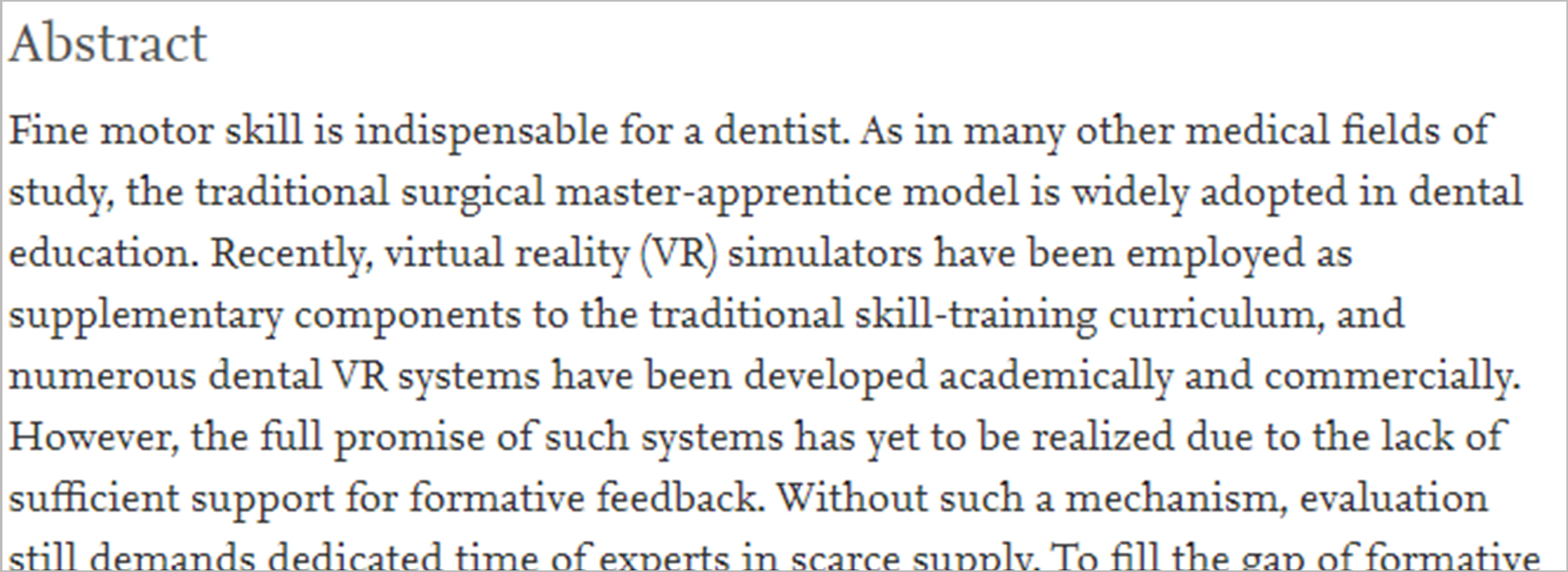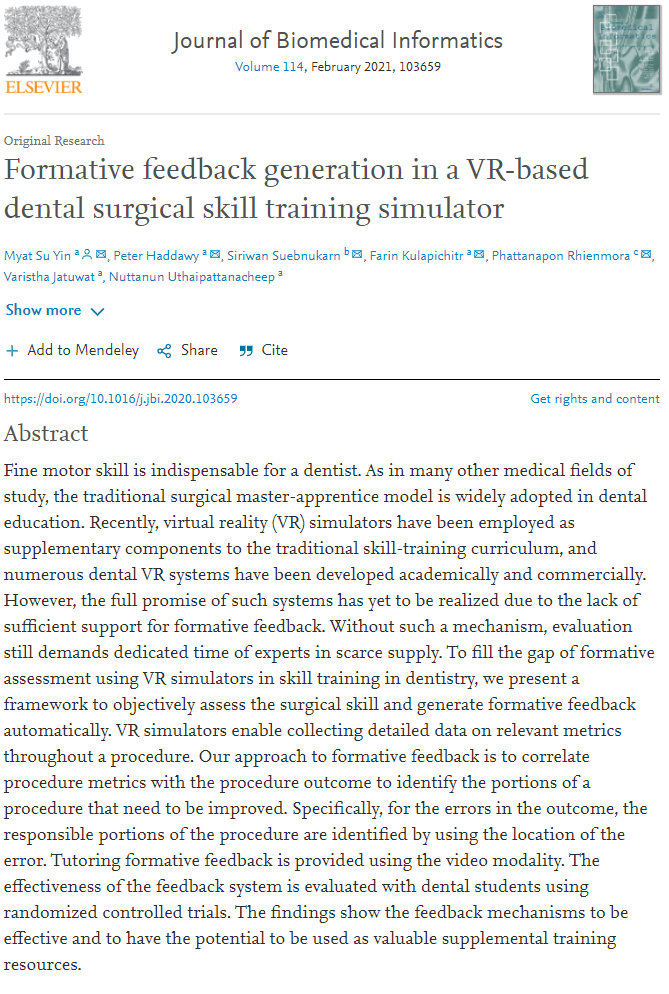Journal /Conference
Journal of Biomedical Informatics
Authors
Myat Su Yin (1), Peter Haddawy (1 2), Siriwan Suebnukarn (3), Farin Kulapichitr (1), Phattanapon Rhienmora (4), Varistha Jatuwat (1), Nuttanun Uthaipattanacheep (1)
Affiliation
- Faculty of ICT, Mahidol University, Nakhon Pathom, Thailand
- Bremen Spatial Cognition Center, University of Bremen, Germany
- Faculty of Dentistry, Thammasat University, Pathum Thani, Thailand
- School of Information Technology and Innovation, Bangkok University, Thailand
Abstract
Fine motor skill is indispensable for a dentist. As in many other medical fields of study, the traditional surgical master-apprentice model is widely adopted in dental education. Recently, virtual reality (VR) simulators have been employed as supplementary components to the traditional skill-training curriculum, and numerous dental VR systems have been developed academically and commercially. However, the full promise of such systems has yet to be realized due to the lack of sufficient support for formative feedback. Without such a mechanism, evaluation still demands dedicated time of experts in scarce supply. To fill the gap of formative assessment using VR simulators in skill training in dentistry, we present a framework to objectively assess the surgical skill and generate formative feedback automatically. VR simulators enable collecting detailed data on relevant metrics throughout a procedure. Our approach to formative feedback is to correlate procedure metrics with the procedure outcome to identify the portions of a procedure that need to be improved. Specifically, for the errors in the outcome, the responsible portions of the procedure are identified by using the location of the error. Tutoring formative feedback is provided using the video modality. The effectiveness of the feedback system is evaluated with dental students using randomized controlled trials. The findings show the feedback mechanisms to be effective and to have the potential to be used as valuable supplemental training resources.
DOI / Link
- 10.1016/j.jbi.2020.103659


